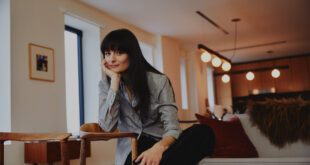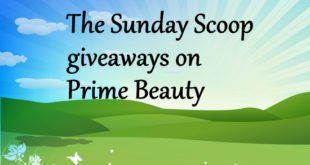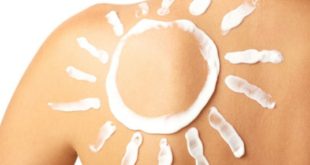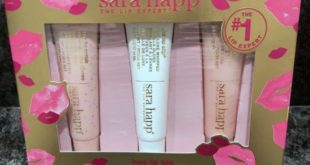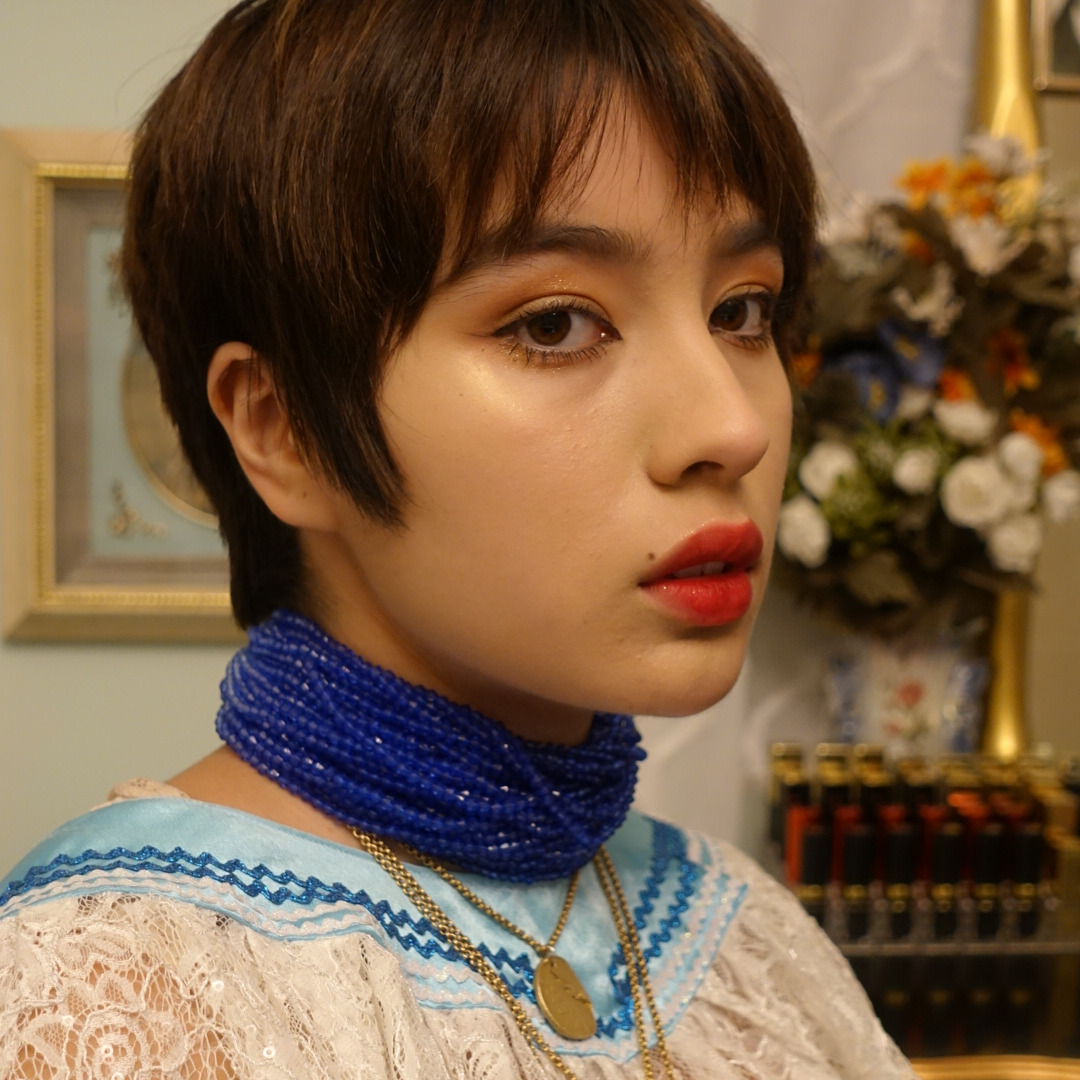
The #ITGTopShelfie interview series focuses on the beauty routines of Into The Gloss’ lovely, accomplished, and loyal community of readers. Submit your own on Instagram—post your Top Shelfie (tag us @intothegloss!) and include the hashtag #ITGTopShelfie for a chance to be featured on ITG.
“Hi! I’m Dante Blais-Billie (@missfloridaseminoledurantebb). I’m one of about 4,000 members of the Seminole Tribe of Florida—to put that into perspective, before contact the population of indigenous people in Florida was about 200,000, and after contact, the Trail of Tears, and the Indian Removal Act, it’s estimated that only 300 indigenous people were left in the Everglades. My tribe is the only one that didn’t sign treaties with the US, and I grew up in one of our sovereign homelands to the east, our Hollywood Seminole Indian Reservation. Currently I serve as a princess for the Seminole Tribe of Florida through the cultural ambassador title of Miss Florida Seminole. A cultural pageant would be the best way to describe it—princess is a foreign word to us, but it’s the clearest way to communicate the importance of female presence in our matriarchal community. I was first introduced to the concept of the pageant when I was probably six or seven. I couldn’t believe I was seeing Seminole girls on TV, modeling traditional outfits—I was so blown away. My gradmother told me that to do the pageant, you had to speak Mikisúkî. I lived in a household that didn’t speak the language, and for a long time I was too ashamed to approach it—the pageant gave me a reason to start learning.
I won Junior Miss on my first try. For the pageant, I had to possess a huge amount of cultural knowledge and be able to answer questions about the entire history and contemporary presence of our tribe. That was really eye-opening—even though I was in high school off the reservation, I never thought of myself as representing all native people all the time. The pageant made me realize that when I am outside of my community, people really have no idea that our knowledge, like traditional practices of land stewardship or traditional medicine, has so much value. There is so much more education to do so indigenous people can live without being ostracized.
I got a university scholarship from my tribe, and once I finished, I knew I wanted to reinvest myself in my community. I am who I am because my tribe has invested so much in me. Usually the princess reigns for only one year, but because of COVID I’m reigning for two years—it would be unsafe to have a pageant right now. I work to strengthen my community’s relationship to those around us through educational workshops and advocating for indigenous rights. Lately I’ve been advocating for two-spirit affirmation, which is kind of a placeholder English term for acknowledging traditions for queer people. I identify as non-binary and that’s a relatively new idea to my tribe. While we’ve always had tolerance for nonbinary and queer people, we don’t have traditional language to encompass them. Because my degree is in art history, I’m also really passionate about getting more contemporary Seminole artists into local museums—I worked on curating an exhibit with the Fort Lauderdale History Museum last year, and now I’m focusing on creating a permanent art recreation program within my tribe.
My personal journey with decolonization shifted my entire idea of beauty. It meant reconnecting to ancient values and indigenous systems, and rediscovering who I am outside of a colonized lens. I used to be ashamed of the fullness of my lips, the shape of my eyes, and the masculinity of my jaw because they didn’t fit within the Eurocentric idea of beauty I was presented with. In my culture, beauty is a way to express your role in the community. Certain thread colors and how many silver coins you’re wearing can convey your relationship to your parents, or your relationship to your lover. For women, having lots of embellishments shows what your family thinks of you, and for men it shows that you can trade, or that you’re a good provider. I’ve been incorporating both our masculine and feminine practices of beauty into my own routine, which has been really central in embracing my two-spirit identity. Physically I look a lot like my father, and being able to carry on his legacy as an indigenous man has been instrumental in my own personal healing. It’s really empowering to see myself as a figure of masculine and feminine reconciliation.
My fondest beauty memories are when I would cosplay at anime and video game conventions—I thought it was the coolest thing that I could visually show people how much my favorite manga meant to me. I didn’t prioritize skincare because I couldn’t express myself through my skin. But I started breaking out on my cheeks when I got to university, and my dermatologist was like, ‘Please, just wear sunscreen.’ Now I use Soap and Glory’s Clarity cleanser, prescription benzoyl peroxide, and Neutrogena’s Ultra Sheer Liquid Sunscreen. If I have an event, I put Covergirl Aquasmooth in Buff Beige on top.
With makeup, I tend to focus on my eyes. I really like how dark my features are—I used to want bright, clear eyes like the models in magazines, but now I love to accentuate their almond shape and how dark my eyelashes are. I love all the rusty red tones in the Pat McGrath Mothership V palette. The glitter is really fun too, and I think it goes nicely with my beadwork. In my culture, we wear lots of flashy beads and coins—the more the merrier, and glitter really compliments that. I use the lightest color in the palette as highlighter, and put that under my eyeliner in the outer corners of my eyes, on top of my cheekbones, and just under my brow bones. I went through a phase of using a glue stick to fluff my up eyebrows, but lately I’ve just been filling them in with a dark shade from the Urban Decay Basics palette and an angled brush. My favorite makeup trick that I wish I learned earlier is that lining the inner corners of my eyes elongates them so much more than a flick at the end does. I’ve been using Maybelline’s Stiletto Ultimate Precision Liquid, which is a little fine tip marker. But I think my holy grail makeup item is L’Oréal’s Lash Paradise mascara. I bought it on a whim because I love Elle Fanning—she’s in the ads—and I’m so glad I did.
Reconciling with my lips has been a long journey. I used to be teased so much for their fullness, and I would fade out my lipstick so you couldn’t see where they ended. I still love a soft look, but now I’ll apply lipstick all the way to the edges and then smudge around my lips with my pinky finger. And I go for bolder colors to really embrace them. My favorite is the lip gloss in Spacesuit from Billiee Beauty, which is indigenous-owned. It’s this completely shimmery, almost copper gloss that I think looks so good with indigenous skin tones. They also have a really dramatic red liquid lipstick called Kiss Me that I’ve been using religiously.
I’ve always experimented with my hair because my mother is a hairdresser. I usually base my styles on whatever my favorite fictional character is at the moment—I did bleached blonde hair and eyebrows to be like Lady Amalthea from The Last Unicorn, and lately I’ve been keeping my hair short after my favorite Manga character. Since it’s so short, I don’t do much for it. My hair is straight but my sister’s is wavy, and that’s how I found out about the As I Am Coconut Co-Wash. I started using it back when my hair was damaged, and I stuck with it because it makes my hair feel really nice. My tribe is very tolerant of different gender expressions, so while we do have established gender identities and gender presentations, it’s not seen as a negative when people break away from those binaries. For me to present as female but have a boy’s haircut is something that’s wholly embraced. That’s just the culture I’m lucky to be in.”
—as told to ITG
Photos via the author
